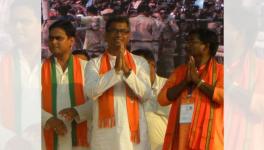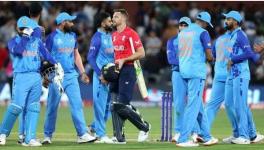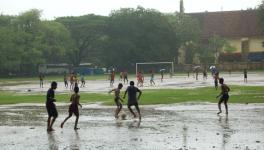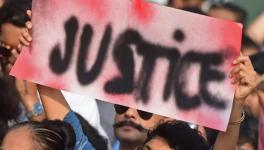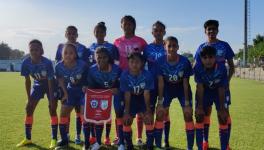Caste, Creed, Corporation: A Brief History of Bias in Indian Football
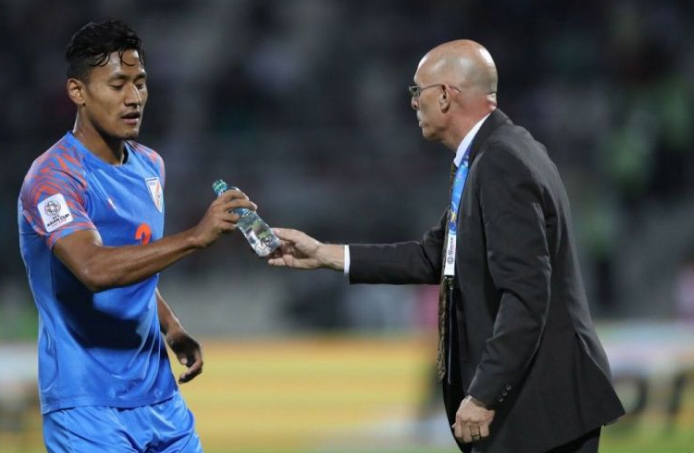
Salam Ranjan Singh was the last I-League player who turned out for the Indian football team, replacing Anas Edathodika at the 2019 AFC Asian Cup (Pic: AIFF).
Manindra Nath Dutta Ray carried considerable weight in the Indian sporting arena in 1950s and ’60s, especially in football and cricket. Bechu-da, as he was widely known, held the distinction of being in the national selection committees of both the disciplines for a long time. In his younger days, Dutta Ray regularly played football and cricket at the Kolkata Maidan. Later, he became an umpire in first-class cricket and an able administrator too.
But Dutta Ray was also famous for his manipulative skills. He knew how to pull strings from behind the curtains. Twice he played important roles in the appointment of Indian captains. On both occasions, he did it in absentia!
One famous story is how Dutta Ray didn’t turn up for the cricket board’s selection committee meeting in January 1971. After a 2-2 deadlock between the four selectors, chairman Vijay Merchant used his casting vote to appoint Ajit Wadekar the new captain in place of Mansur Ali Khan Pataudi. Dutta Ray, people said, stayed away deliberately.
But he had done it once before, too. In 1962, before the Indian football team flew to Jakarta for the Asian Games, there was a controversy over captaincy. It was widely believed that PK Banerjee, who led India at the 1960 Rome Olympics, would be retained.
On July 31, news agency PTI ran a story quoting sources that PK has been retained as skipper. Next day, when the meeting was held in Hyderabad, All India Football Federation (AIFF) president M Dutta Ray did not turn up.
Instead, he sent a cable authorising honorary secretary K. Ziauddin to chair the meeting. Chunni Goswami of Mohun Bagan was named the captain. PTI reported there were some disagreements over the selection.
Old timers allege that Dutta Ray acted under pressure from Mohun Bagan officials. But it wasn’t the only time when India’s football captaincy changed hands at the last minute, or names of deserving footballers mysteriously disappeared from the final squad.
Read More | Future Sense: A Window of Opportunity That Could Change eSports Forever
It has happened before; it is happening even now. Initially, it was state associations, clubs or influential officials calling the shots. Religion and racial bias also raised its ugly head at times. Corporate considerations are said to be the latest addition.
SS Narayan, who guarded the Indian goal in two Olympics (1956 and 1960), once told this correspondent that his teammate for India, Bombay State (now Maharashtra) and Caltex Sports Club, SA Latif migrated to Pakistan after he was denied the captaincy for the 1960 Rome Olympics.
Latif was the captain of the team for the 1960 pre-Olympics meet.
Before the final selection for the Italy-bound squad though, some people in the AIFF apparently raised objections. The coach (SA Rahim) and the manager (K Ziauddin) are from the same religion, so Latif should not be the captain, they argued. PK Banerjee got the job.
The son of an Army officer and a handsome man, Latif didn’t say a word. Next year, he migrated to Pakistan. In June 1964, on their way back from Tehran, the Indian team landed in Karachi at 2am to change flights. They found Latif waiting there to receive his former teammates.
For close to a decade after independence, the Indian captaincy for the Olympics was “reserved” for Mohun Bagan players. Three consecutive captains, Talimeren Ao (1948), Sailen Manna (1952) and Samar Banerjee (1956) were from Mohun Bagan. The selection of at least one of them was highly questionable, even as a member of the squad.
Going purely on the basis of seniority, defender SK Azizuddin would have been the natural choice for the 1956 Melbourne Games. Instead, he was offered the post of the deputy. He flatly refused. J Kittu became the vice-captain. As luck would have it, captain Samar Banerjee played only one match and Kittu was entrusted with the job for the rest of the tournament.
There was a time when the Indian football team used to be crowded with players from four cities; Kolkata, Mumbai, Hyderabad and Bengaluru. This is no attempt to question the merit of these footballers. They were extremely good. But equally powerful were the officials of these states.
Indian football has changed over the years. So has the pocket of influence. Ever since the Asian Cup campaign in January 2019, no footballer from the I-League has made the national squad. Defender Salam Ranjan Singh, who played for East Bengal, is the last I-League player to have done so. He was in the squad for Asian Cup.
Read More | FIFA Under-17 Women's World Cup in India Postponed
Of late, it seems an unwritten law has been enforced that only footballers from the franchise league (Indian Super League - ISL) will be selected. True, the franchise league attracts players of better quality, the league is far better organised and offers more money than the I-League. But not having even one player from the I-League in the national camp is difficult to explain.
Lot of present day footballers firmly believe the franchise league is the gateway to the national team. AIFF, of course, would say it is a whisper campaign that has no truth. In fact, it was highly encouraging when national coach Igor Stimac assured the I-League footballers last November.
“The players need to know that each player in the I-league with an Indian passport is one of the possible future candidates for the national team. It is up to them — how they perform for their respective teams, how they present themselves and how many points they win for their clubs,” Stimac said on November 20, 2019.
On February 28, 2020, Stimac named 43 footballers for the 18-day long camp for the March 26 tie in Bhubaneswar. Eventually, neither the camp nor the match took place because of Coronavirus. It was, however, very disappointing not to see even one I-League footballer find a place in the 43-man list.
Read More | Sunil Chhetri Interview: Make a Reserve League to Increase Game Time For Indians
Footballers like Ashutosh Mehta, SK Sahil (Mohun Bagan), Rochharzela (Aizawl FC) or Lalkhawpuimawia (Churchill Brothers) and many others could have been given an opportunity to rub shoulders with the elite lot in the camp.
They would have received a chance to improve their skills under the Croatian coach. Especially when some franchise players, who have played only three matches or no match at all, were called to the Bhubaneswar camp.
Are the I-League footballers unwelcome? Or do corporate connections matter more in Indian football? After all, the AIFF, in its press release on July 9, 2019, said the presence of all national team footballers in the franchise league, encouraged them to deny the I-League an AFC Champions League spot and, effortlessly, demote it tier two.
The definition of caste, creed and class might be changing in modern Indian society, but these divisions very much exist. And football, perhaps, is not exempt.
Get the latest reports & analysis with people's perspective on Protests, movements & deep analytical videos, discussions of the current affairs in your Telegram app. Subscribe to NewsClick's Telegram channel & get Real-Time updates on stories, as they get published on our website.










